Related Research Articles

The Office of the Secretary of Defense (OSD) is a headquarters-level staff of the United States Department of Defense. It is the principal civilian staff element of the U.S. Secretary of Defense, and it assists the Secretary in carrying out authority, direction and control of the Department of Defense in the exercise of policy development, planning, resource management, fiscal, and program evaluation responsibilities. OSD is the Secretary of Defense's support staff for managing the Department of Defense, and it corresponds to what the Executive Office of the President of the U.S. is to the U.S. president for managing the whole of the Executive branch of the federal government.

The United States under secretary of defense for policy (USDP) is a high level civilian official in the United States Department of Defense. The under secretary of defense for policy is the principal staff assistant and adviser to both the secretary of defense and the deputy secretary of defense for all matters concerning the formation of national security and defense policy.
The Assistant Secretary of Defense for Networks & Information Integration (ASD(NII)) was an appointed position that provided management and oversight of all DoD information technology, including national security systems. The ASD(NII) also served as the chief information officer (CIO) of the United States Department of Defense (DoD), a position distinct from the ASD and governed by the Clinger-Cohen Act.

The under secretary of defense for intelligence and security or USD(I&S) is a high-ranking civilian position in the Office of the Secretary of Defense (OSD) within the U.S. Department of Defense (DoD) that acts as the principal civilian advisor and deputy to the secretary of defense (SecDef) and deputy secretary of defense (DepSecDef) on matters relating to military intelligence and security. The under secretary is appointed as a civilian by the president and confirmed by the Senate to serve at the pleasure of the president.
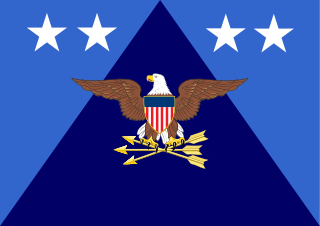
The under secretary of defense for personnel and readiness, or USD (P&R) is a high-ranking civilian position in the Office of the Secretary of Defense (OSD) within the United States Department of Defense responsible for advising the secretary and deputy secretary of defense on recruitment, career development, pay and benefits, and oversight of the state of military readiness. The under secretary is appointed from civilian life by the president and confirmed by the Senate to serve at the pleasure of the President.
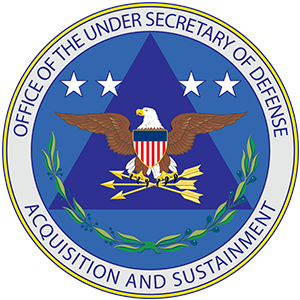
The Under Secretary of Defense for Acquisition and Sustainment, or USD (A&S), is the Principal Staff Assistant (PSA) and advisor to the Secretary of Defense for all matters relating to acquisition and sustainment in the Department of Defense. This includes the DoD Acquisition System; system design and development; production; logistics and distribution; installation maintenance, management, and resilience; military construction; procurement of goods and services; material readiness; maintenance; environment and energy resilience ; utilities; business management modernization; International Armaments Cooperation, Cooperative Acquisition and International Agreements, Promoting exportability of military components to allies and partners; nuclear, chemical and biological defense programs; and nuclear command, control, and communications.

The Under Secretary of Defense (Comptroller)/Chief Financial Officer, abbreviated USD(C)/CFO, is a high level civilian official in the United States Department of Defense. The Under Secretary of Defense (Comptroller) is the principal staff assistant and adviser to both the Secretary of Defense and the Deputy Secretary of Defense for all budgetary and fiscal matters, including the development and execution of the Defense Department's annual budget.
The Assistant Secretary of Defense for Health Affairs (ASD(HA)) is chartered under United States Department of Defense Directive (DoDD) 5136.1 in 1994. This DoDD states that the ASD(HA) is the principal advisor to the U.S. Secretary of Defense on all "DoD health policies, programs and activities." In addition to exercising oversight of all DoD health resources, ASD(HA) serves as director of the Tricare Management Activity.
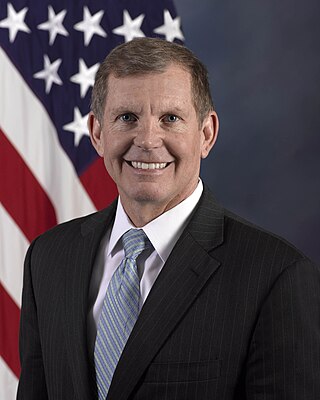
Michael D. Lumpkin is a former American Naval Officer and businessman who served as the Special Envoy and Coordinator of the Global Engagement Center at the U.S. Department of State from January 2016 to January 2017. From 2013 until 2016, he was the Assistant Secretary of Defense for Special Operations and Low-Intensity Conflict. During that time, he also served as the acting Under Secretary of Defense for Policy, the third-highest civilian job at the United States Department of Defense.
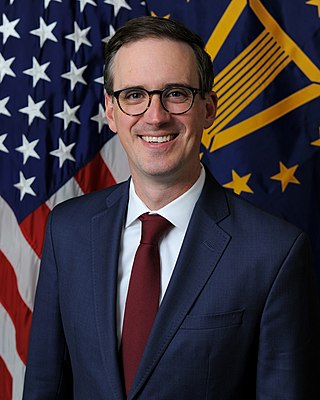
The Assistant to the Secretary of Defense for Public Affairs, or ATSD (PA), is the principal staff advisor and assistant to the Secretary of Defense and Deputy Secretary of Defense for public information, internal information, community relations, information training, and audiovisual matters in support of Department of Defense activities, leading a worldwide public affairs community of some 3,800 military and civilian personnel. The Assistant to the Secretary follows the Secretary's Principles of Information in providing Defense Department information to the public, the United States Congress and the media.

The Assistant Secretary of Defense for Legislative Affairs, or ASD(LA), is the head of the Office of the Secretary of Defense for Legislative Affairs, responsible for providing support to the Secretary of Defense (SecDef) in his/her dealings with the United States Congress. In addition to serving as SecDef's legislative adviser, the ASD(LA) promotes the Department of Defense's strategy, legislative priorities, policies, and budget before Congress. In carrying out these responsibilities, the ASD(LA) directs a team of managers, action officers, and support personnel who help direct, monitor and manage communications and activities between Congress and elements of the Department of Defense. The ASD(LA) is considered a part of the Office of the Secretary of Defense.
The Technical Support Working Group (TSWG) is a United States Interagency program for research and development into combating terrorism measures. Established in 1986, TSWG falls under the oversight of the Assistant Secretary of Defense for Special Operations/Low-Intensity Conflict and derives some authorities for international work from the Coordinator for Counterterrorism at the Department of State.

The Under Secretary of Defense for Research and Engineering, abbreviated USD (R&E), is a senior official of the United States Department of Defense. The USD (R&E) is charged with the development and oversight of technology strategy for the DoD. The post has at various times had the titles Assistant Secretary of Defense for Research and Engineering, or Director of Defense Research and Engineering (DDR&E). The latter title has itself historically varied between the rank of under secretary and that of assistant secretary.

The Assistant Secretary of Defense for Nuclear, Chemical & Biological Defense Programs, or ASD(NCB), is the principal adviser to the Secretary of Defense, Deputy Secretary of Defense and the Under Secretary of Defense for Acquisition and Sustainment on policy and plans for nuclear, chemical, and biological defense programs.

In the United States, the Assistant Secretary of Defense for International Security Affairs or ASD (ISA) is the principal advisor to the Under Secretary of Defense for Policy (USD (P)) and the United States Secretary of Defense on international security strategy and policy on issues of Department of Defense (DoD) interest related to the governments and defense establishments of the nations and international organizations of Europe (including the North Atlantic Treaty Organization), the Middle East, Africa, and the Western Hemisphere. The ASD (ISA) also oversees security cooperation programs and foreign military sales programs in these regions. Despite the broad title of the office, the ASD (ISA) does not develop policy related to Asia, the Pacific region, Latin America, or South America.

The Assistant Secretary of Defense for Indo-Pacific Security Affairs, or ASD (IPSA), is the principal advisor to the Under Secretary of Defense for Policy (USD(P)) and the Secretary of Defense on international security strategy and policy on issues of DoD interest that relate to the governments and defense establishments of the nations and international organizations within the Indo-Pacific region. It primarily includes the entire region from India to Japan, and the region where ASEAN is located. The position was originally titled Assistant Secretary of Defense for Asian and Pacific Security Affairs but was renamed by the Trump Administration alongside the renaming of the United States Indo-Pacific Command.

The Assistant Secretary of Defense for Sustainment (ASD(Sustainment)), formerly known as the Assistant Secretary of Defense for Logistics and Materiel Readiness (ASD(L&MR)), is one of three assistant secretaries reporting to the Under Secretary of Defense for Acquisition and Sustainment. Formerly the position was an adviser to the Under Secretary of Defense for Acquisition, Technology and Logistics, Deputy Secretary of Defense, and Secretary of Defense on logistics and materiel readiness issues within the Department of Defense (DoD), including programs related to logistics, materiel readiness, maintenance, strategic mobility, and sustainment support. As the principal logistics official within the senior management of the DoD, the ASD(Sustainment) exercises authority, direction and control over the director of the Defense Logistics Agency. Like all other Assistant Secretaries of Defense, the ASD(Sustainment) is considered a part of the Office of the Secretary of Defense.

The Assistant Secretary of Defense for Energy, Installations, and Environment, concurrently the Chief Sustainability Officer, and formerly known as the Deputy Under Secretary of Defense for Installations and Environment, provides management and oversight of military installations worldwide and manages environmental, safety, and occupational health programs for the Department of Defense (DoD). DoD's installations cover some 29,000,000 acres (120,000 km2), with 539,000 buildings and structures valued at more than $700 billion. The responsibilities of the ASD(EI&E) include the development of installation capabilities, programs, and budgets; installation-energy programs and policy; base realignment and closure; privatization of military housing and utilities; and integration of environmental needs into the weapons acquisition process. The ASD(EI&E) is also responsible for environmental management, safety and occupational health; environmental restoration at active and closing bases; conservation of natural and cultural resources; pollution prevention; environmental research and technology; fire protection; and explosives safety. The ASD(EI&E) reports to the Under Secretary of Defense for Acquisition and Sustainment, and is a part of the Office of the Secretary of Defense.

Assistant Secretary of Defense is a title used for many high-level executive positions in the Office of the Secretary of Defense within the U.S. Department of Defense. The Assistant Secretary of Defense title is junior to Under Secretary of Defense. Reorganization Plan No. 6 of 30 June 1953 increased the number of assistant secretaries. The list of Assistant Secretaries of Defense includes:
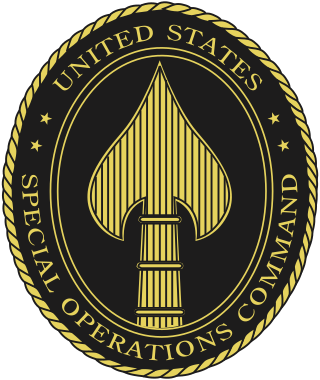
The United States Special Operations Command is the unified combatant command charged with overseeing the various special operations component commands of the Army, Marine Corps, Navy, and Air Force of the United States Armed Forces. The command is part of the Department of Defense and is the only unified combatant command created by an Act of Congress. USSOCOM is headquartered at MacDill Air Force Base in Tampa, Florida.
References
- ↑ Garamone, Jim (29 August 2006). "Pentagon to Reorganize Policy Shop, Improve Cooperation". American Forces Information Service.
- ↑ Ryan Browne. "Pentagon shake-up continues as another top official departs". CNN. Retrieved 2020-12-01.
- ↑ "Department of Defense Key Officials" (PDF). Historical Office, OSD. 2004. Archived from the original (PDF) on 2011-07-21. Retrieved 2011-02-01.
- ↑ "Department of Defense Key Officials" (PDF). Historical Office, OSD. 28 January 2020. Retrieved 2020-06-13.
- ↑ "Honeywell -Investor Relations". Ems-t.com. Archived from the original on 2011-10-03. Retrieved 2013-06-17.